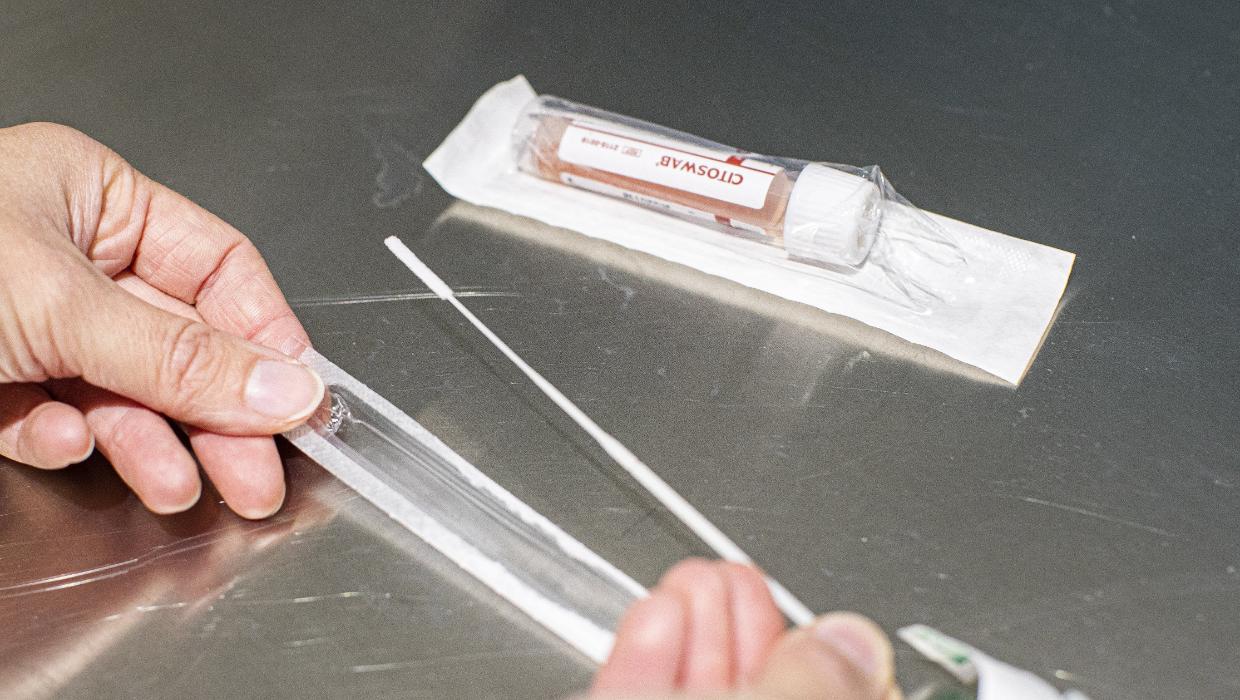Health
Women Empower Health: Cervical Self-Testing Simplified

Cervical self-testing is transforming women’s health by providing a simpler, less stressful alternative to traditional screenings. The initiative, promoted by the health advocacy group Girls Uninterrupted, aims to empower women to take charge of their health. This innovative approach not only enhances accessibility but also reduces the anxiety often associated with cervical cancer screenings.
Cervical cancer remains a significant health issue globally, with the World Health Organization estimating that approximately 604,000 women were diagnosed with the disease in 2020. To combat this, health authorities have introduced self-testing kits that allow women to collect samples in the privacy of their own homes. This method is particularly beneficial for those who face barriers to accessing healthcare facilities.
Understanding Self-Testing
The cervical self-testing process involves using a swab to collect cells from the cervix. Women then send the sample to a laboratory for analysis. Results typically arrive within a few weeks, allowing for timely follow-up if necessary. The convenience of this method is one of its key advantages, especially for women in rural or underserved areas who may not have easy access to healthcare providers.
According to Health Australia, self-testing is as effective as traditional Pap smears in detecting high-risk strains of the human papillomavirus (HPV), which can lead to cervical cancer. This finding is crucial, as HPV is the primary cause of cervical cancer, and early detection significantly improves treatment outcomes.
Girls Uninterrupted hosts emphasize the importance of education surrounding self-testing. They highlight that many women may not be aware of their options or the significance of regular screenings. By providing clear information and resources, the initiative seeks to demystify the process and encourage proactive health management.
Breaking Down Barriers
The introduction of cervical self-testing is expected to increase screening rates among women who have historically been underrepresented in traditional healthcare settings. Factors such as stigma, cultural beliefs, and lack of information often prevent women from seeking necessary healthcare. Self-testing offers a solution that fosters privacy and autonomy, allowing women to feel more in control of their health decisions.
In a recent survey conducted by Girls Uninterrupted, over 70% of respondents indicated they would prefer self-testing over traditional methods. This shift in preference underscores the potential for self-testing to reduce anxiety and improve the overall experience of cervical health screening.
The initiative aligns with broader public health goals to reduce cervical cancer rates worldwide. By making screenings more accessible and less intimidating, health organizations hope to achieve higher participation rates and ultimately save lives.
As awareness of cervical self-testing grows, it is crucial for women to stay informed about their health options. Engaging with reliable sources and healthcare professionals can further enhance understanding and encourage regular health checks.
In conclusion, cervical self-testing represents a significant advancement in women’s health, promoting empowerment and accessibility. With ongoing education and support, initiatives like those from Girls Uninterrupted are paving the way for healthier futures.
-

 World3 months ago
World3 months agoTest Your Knowledge: Take the Herald’s Afternoon Quiz Today
-

 Sports3 months ago
Sports3 months agoPM Faces Backlash from Fans During Netball Trophy Ceremony
-

 Lifestyle3 months ago
Lifestyle3 months agoDunedin Designers Win Top Award at Hokonui Fashion Event
-

 Sports3 months ago
Sports3 months agoLiam Lawson Launches New Era for Racing Bulls with Strong Start
-

 Lifestyle3 months ago
Lifestyle3 months agoDisney Fan Reveals Dress Code Tips for Park Visitors
-

 World3 months ago
World3 months agoCoalition Forms to Preserve Māori Wards in Hawke’s Bay
-

 Health3 months ago
Health3 months agoWalking Faster Offers Major Health Benefits for Older Adults
-

 Politics3 months ago
Politics3 months agoScots Rally with Humor and Music to Protest Trump’s Visit
-

 Top Stories3 months ago
Top Stories3 months agoUK and India Finalize Trade Deal to Boost Economic Ties
-

 World3 months ago
World3 months agoHuntly Begins Water Pipe Flushing to Resolve Brown Water Issue
-

 Entertainment3 months ago
Entertainment3 months agoExperience the Excitement of ‘Chief of War’ in Oʻahu
-

 Science3 months ago
Science3 months agoNew Interactive Map Reveals Wairarapa Valley’s Geological Secrets









